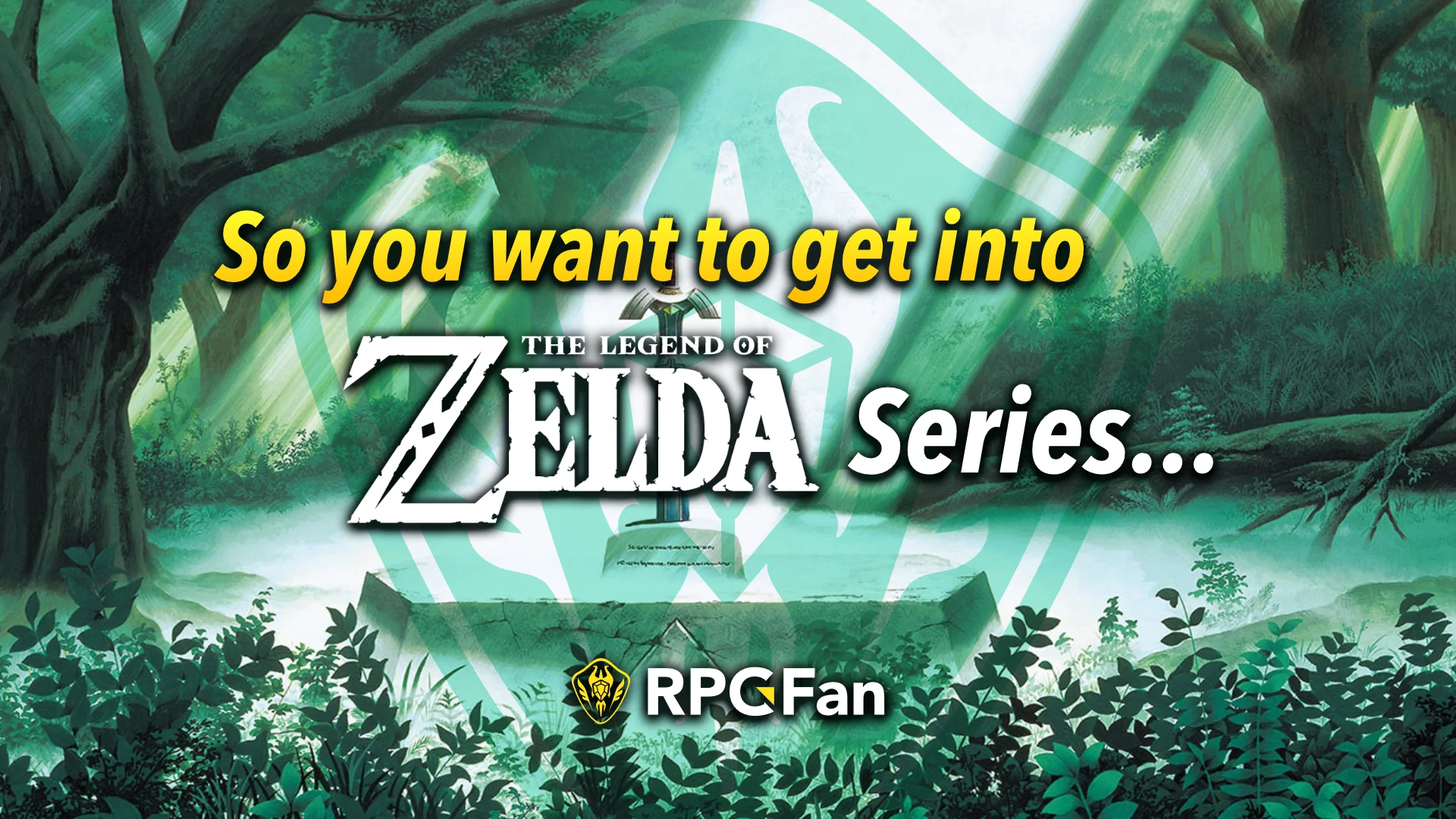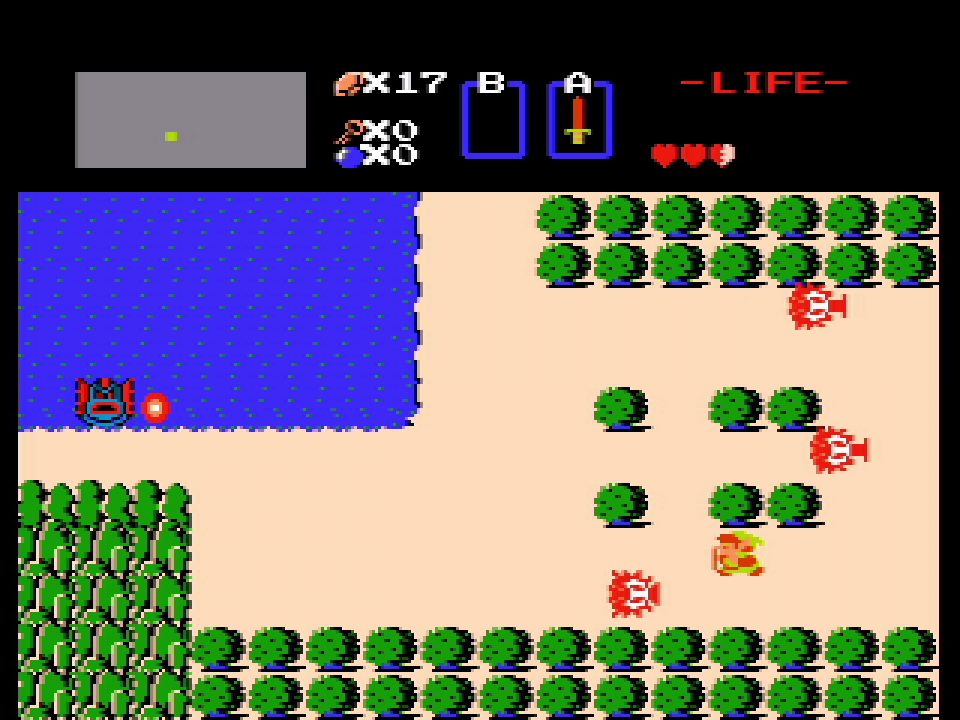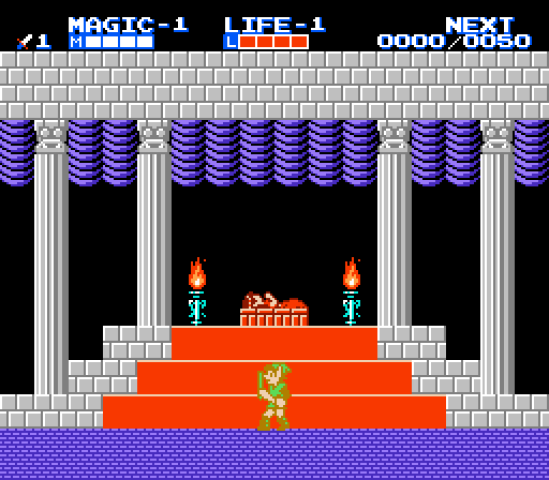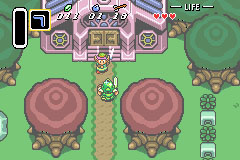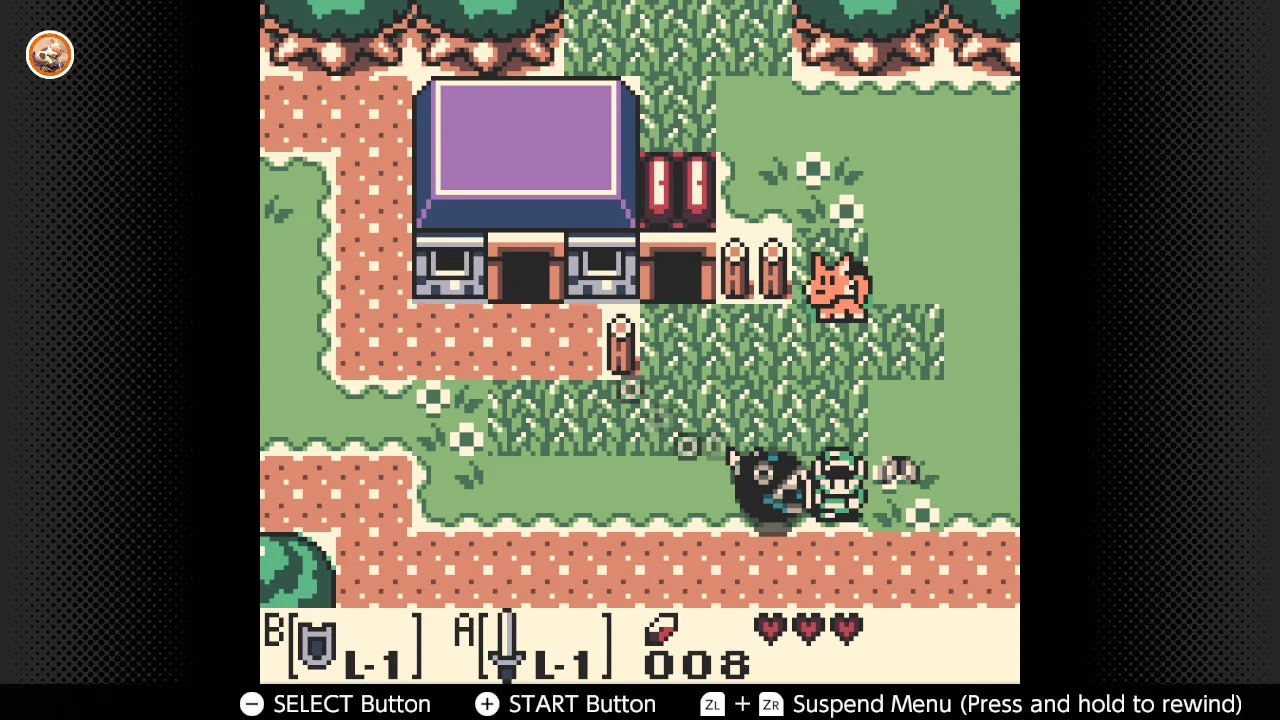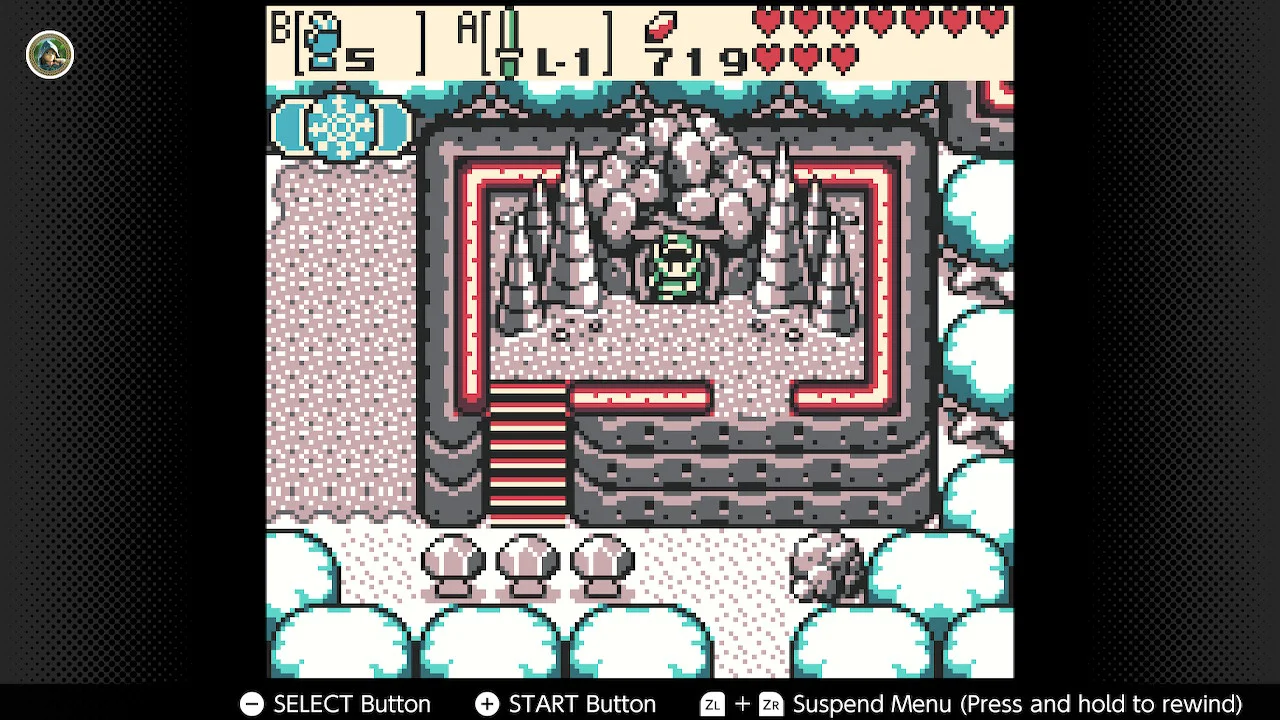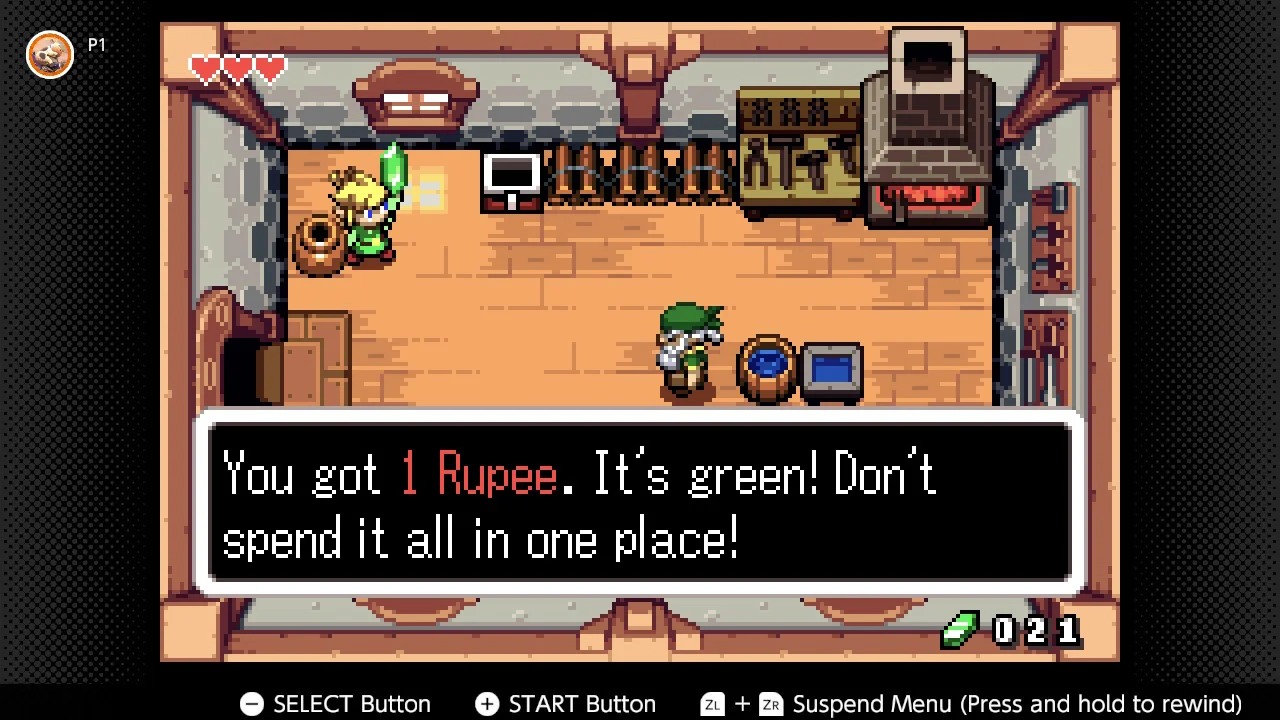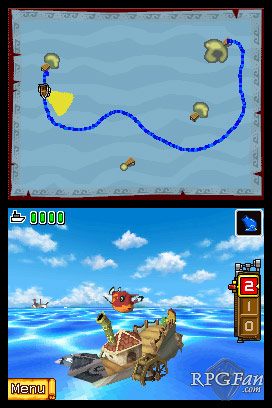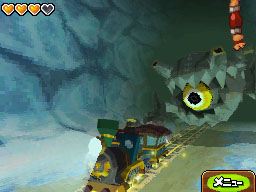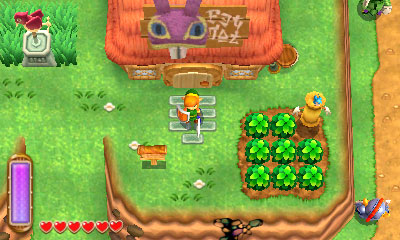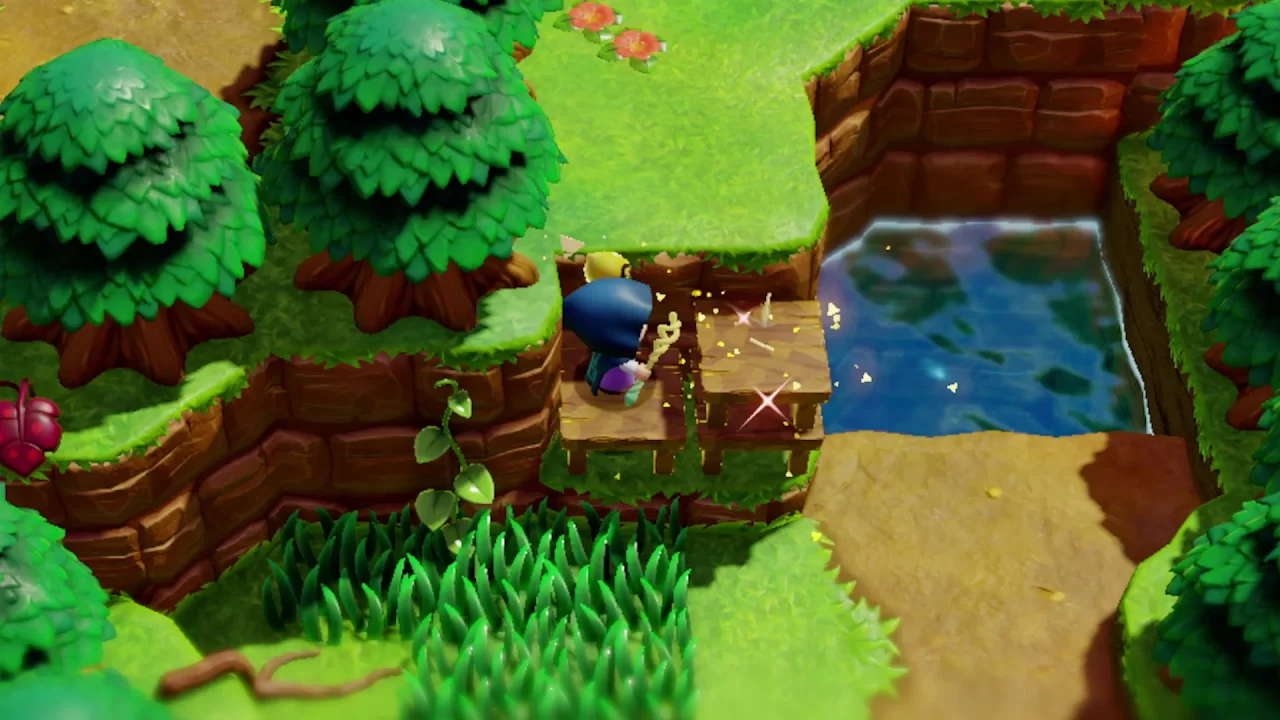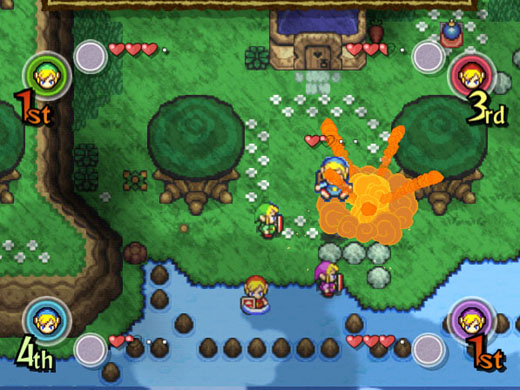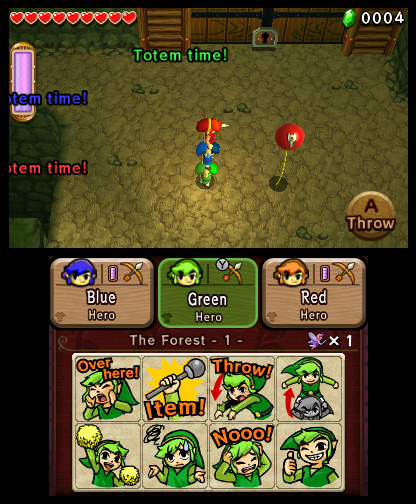So you want to get into The Legend of Zelda series? In some ways, that’s like asking, “So you want to get into videogames?” The Zelda series is everywhere in the gaming world: on store shelves, in online discourse, and steeped in the design of many modern videogames. If you have managed to avoid the series for this long but are still curious about it, then strap in as we dive into every single game in The Legend of Zelda series (no, we are not talking about those).
This first section covers the 2D Legend of Zelda games, all featuring top-down action adventure gameplay driven by puzzles and dungeon crawling — with the single exception of the 2D sidescrolling Zelda II. While tenets of the 2D Zelda design, such as open-world (or open-zone) exploration, dungeon-specific items, and real-time action gameplay also apply to the 3D Legend of Zelda games, the two feel distinct enough to logically separate them by their dimensionality.
Section two covers the 3D titles, starting with Ocarina of Time and going all the way up to the most recent 3D Zelda title, Tears of the Kingdom. Broadly speaking, these games are third-person action RPGs with lock-on combat, physics-based puzzles, and open traversal zones, though there are several, such as Hyrule Warriors, which step away from the series’ gameplay norms.
Section three, Top 5 Places to Start, offers what it says on the tin, with the five Legend of Zelda games that are great for those just jumping into the series.
2D Legend of Zelda Games
This list begins with The Legend of Zelda games in the second dimension. To note, the following games are not exclusively 2D, as the DS and 3DS games are built in 3D engines. However, they all follow the “top-down” (and sometimes sidescrolling) viewpoint and designs pioneered by The Legend of Zelda for the Famicom Disk System (FDS) and Nintendo Entertainment System (NES). All games are sorted by original release date.
Platform Key
- FDS: Famicom Disk System
- NES: Nintendo Entertainment System
- SFC: Super Famicom
- SNES: Super Nintendo Entertainment System
- N64: Nintendo 64
- GCN: GameCube
- NSW: Switch
- NSO: Nintendo Switch Online
- GB: Game Boy
- GBC: Game Boy Color
- GBA: Game Boy Advance
- NDS: Nintendo DS
- 3DS: Nintendo 3DS
- VC: Wii/Wii U/DSi/3DS Virtual Console
Note: all Nintendo Switch games are playable on Switch 2 consoles; version differences noted as applicable.
The Legend of Zelda (1986)
NES, FDS, GBA, VC, NSO
What it’s about: Jerry Lawson’s 1975 invention of micro-processor-driven game cartridges paved the way for home videogame consoles. Unfortunately, memory limitations at the time often made them impractical for important things such as saving game files. In 1986, the Famicom Disk System sought to circumvent this issue, as well as make game cards cheaper to produce, by utilizing floppy disk technology. The new console had the power, it just needed a killer launch title.
In comes designer Shigeru Miyamoto hot off the heels of Super Mario Bros. to design a game worthy of this manufacturing breakthrough. His thought: design a game around memory, not just in its implementation of save files, but in its puzzles and design as well. Miyamoto wanted the game to inspire story sharing between players, and he wanted them to think critically about how to progress through the game, remembering the sights and objectives they’d already encountered. The locations of items, dungeons, and secrets between them were designed to foster conversation between players, something games to that point rarely did outside of high score sharing. Story-wise, the game features dark lord Ganon haunting the small kingdom of Hyrule — he desires the Triforce of Power to exact his rule over the land. However, Hyrule’s princess Zelda shatters it into shards and sends a cunning local androgynous boy named Link to nab its shards before Ganon can. The rest is history.
Gameplay and Innovation: The Legend of Zelda has an innovation laundry list of leviathan proportions. In addition to save files, battery backup, and post-arcade (i.e. score-centered) design, it introduced the top-down action camera view for console RPGs, dungeon-specific puzzle solving items, agnostic/non-linear dungeon order, and arguably the entire open-world videogame genre. It laid the foundations for all action-adventure games to come, from Metroid to Final Fantasy to Ys and The Last of Us; even games like DOOM co-opt ideas from Zelda such as dungeon-specific items, colored keys, and enemies as room hazards. There has never been, and may never be, a game which singlehandedly had more of an impact on the videogame medium than The Legend of Zelda, with its numerous innovations.
Why you may, or may not, like this entry: If you are looking to start things at the very beginning, this is the place to start. NES and 8-bit enthusiasts should not miss this game. However, folks who struggle with the classic 8-bit look or (admittedly harsh) chiptune soundfont may struggle to go back this far.
Best played on: NES hardware is unreliable these days — the top-loader works better, but NES game and console pins are finicky, especially if you blow in your cartridges, as this introduces saliva which can damage the pins; try a light cotton swab instead, or some isopropyl alcohol (just make sure it’s all dry before you turn things on again). Despite these challenges, there is something to be said about chunky NES pixels on original hardware hooked up to a CRT.
On the flipside, though, if you are unconcerned with playing on original hardware, try the NES Classic or NES for Nintendo Switch Online. On NSO, you can even opt for an “SP” version that gives you 255 rupees and all the game’s items at the start. Regardless of how you play, I should note: this game is from an era when manuals were extremely important to a game’s storytelling (memory was limited, remember?); so, make sure you check out the game’s manual before you play — you can find it in full color on Nintendo’s website.
Zelda II: The Adventure of Link (1987)
NES, FDS, GBA, VC, NSO
What it’s about: Tears of the Kingdom is the most recent direct sequel in The Legend of Zelda series, a precedent set by Zelda II: The Adventure of Link. Beginning a few years after Zelda 1, Zelda II sees Link imbued with a signal on his hand that will lead him to the Triforce of Courage. Following the advice and guidance of the royal guard captain, Impa, Link sets out to recover this final section of the Triforce and wake Zelda from an eternal slumber — and not just any Zelda, the Zelda — the one from whom every Hylian princess is named.
Gameplay and Innovation: Zelda II is the only game in the Legend of Zelda series to be fully sidescrolling. Battles take place like other action games of the time — Shinobi, Rygar, et cetera — where you platform and swing your sword with timed precision to hit mobs. Bosses require a bit more strategy, such as Carock whose hits you must reflect back; to note, this fight may be the first defensive boss battle in all of videogame history. Zelda II introduces the recurring character Dark Link, which also marks the earliest example of a mainstream videogame doing the evil counterpart trope. While controversial, Zelda II is likely the closest game on this entire list to older Western RPGs, with stats, weapon and armor layouts, and named magic spells.
Why you may, or may not, like this entry: A controversial entry, Zelda II returns to legacy Western RPG mechanics and introduces sidescrolling gameplay, a divisive move for series fans and critics to this day. Some think of Zelda II as a skippable, even non-canon entry, but others regard it as their favorite game in the series for its reversion to older RPG tropes. Personally, I think Zelda II is interesting, if arduously finicky — Link’s sword swings have inconsistent hitboxes, bosses occasionally fail to drop important items, and several boss fights can be (or even need to be) exploited. Admittedly, it is a struggle to hit enemies, as Link’s sword is closer to a dagger than a longsword — this even perturbed NES owners and fans at the time, as Konami’s Castlevania released a year earlier with luxurious whip-long attacks.
In spite of all this, Zelda II is a great NES game. It has its diehards who defend its peculiarity, and when the combat isn’t fussy I can see what they mean. In such a rich tradition, Zelda II is still the outcast, but most (including myself) would still firmly place it in the NES library’s top ten games overall; it’s one of the best-looking, tightest-playing action games on the platform.
Best played on: I would play this on Nintendo Switch Online (NSO has an SP version for this game too), as save states/rewind functionality helps avoid the frustration that the game’s unforgiving combat and buggy boss encounters can produce. That said, Zelda II can be found cheaper than most entries in the series physically, both for NES copies ($15-25 loose or ~$50 complete) and GBA copies ($20-25 loose).
The Legend of Zelda: A Link to the Past (1991)
SNES, SFC, GBA, VC, NSO
What it’s about: The Legend of Zelda: A Link to the Past starts on a dark, rainy night. Chunky rain falls over the house of Hyrule’s last knight, Link, as he awakens from a dream of Princess Zelda — she’s in trouble. Only Link can save her from the clutches of a darkened Hyrule Castle run by the evil wizard Agahnim, whose megalomaniacal visions and obsession with reviving Ganon threaten to unravel an already struggling Hyrule. Agahnim banishes the land’s sages to the Dark World, an inversion of the familiar Hyrulian overworld, and Link must go there to save them. With the evolution of hardware from the FDS to the Super Famicom, developers were afforded the raw power to take Zelda 1‘s simple narrative and expand it into an effective and dramatic story. The increased cartridge storage also allowed for an entire second overworld map and accompanying dungeons, featuring double the bosses, double the items, and double the everything compared to the Light World. As A Link to the Past‘s gameplay and story are more focused, gone are the open-world freedoms afforded by the first game — you must unlock sections of the map with items found in dungeons. However, what LttP sacrifices in openness, it gains in rewarding challenges of memory and a compelling story.
Gameplay and Innovation: Alongside the upgraded RAM and horsepower of the SNES and its eight-megabit cartridges, the controller also gains functionality in two new face buttons, meaning that combat flows much better and you can switch items without losing access to the sword. Unfortunately, the L and R buttons are not used on the SNES, though certain romhacks do add swapping or item use functionality to those buttons. Outside of the introduction of multiple world maps, this game also introduces much of the current Zelda series-standard sound effects, music, and graphics, including the famous “Legend of Zelda” logo. It also introduces Pieces of Heart quests, the Master Sword, and most importantly, the Cucco; you will respect and honor these sacred chickens, or pay the consequences!
Why you may, or may not, like this entry: A Link to the Past is an incredible place to start this series. Enthusiasts of 16-bit pixel art will love the look and feel of LttP, and anyone who enjoys memory-based puzzles, action combat, and the feeling of discovery will find a wonderful home here. A Link to the Past is regarded by many as the finest entry in the series, with some (including EW, Next Generation, and Popular Mechanics) calling it the greatest videogame of all time. If you have a fundamental distaste for top-down action games, you may wish to start elsewhere, such as page two of this guide; however, like most things, this is a taste that can be acquired with time, and you’ll never find a better tastemaker than this.
Best played on: As is the case with the NES, SNES hardware can be finicky and hard to come by nowadays, but A Link to the Past looks and plays beautifully on original hardware. However, it also plays beautifully on the SNES Classic and SNES for Switch Online, and these versions offer quality-of-life enhancements like save states and rewind functionality. There is also a version for Game Boy Advance that includes a side game, Four Swords. This game also has many wonderful romhacks and patches, such as a randomizer, story overhauls, retranslations, and more.
The Legend of Zelda: Link’s Awakening (1993 & 2019)
GB, GBC (DX Version), VC, NSO, NSW (remake)
What it’s about: Link’s Awakening follows Link as he copes with the events of A Link to the Past. He is on his way to the Oracle games on a boat when his ship careens into a nightmarish storm and collapses. The drowning Link is consumed by the legendary Wind Fish and he awakens on an unknown beach. In this strange land, he must confront his trauma, face the Wind Fish’s illusions, and find his place in the Nintendo universe. As you unravel this world’s mysteries, you encounter eccentric characters, gorgeous vistas, and some of the series’ finest dungeons.
Gameplay and Innovation: Link’s Awakening is an 8-bit game that takes much of its inspiration from the 16-bit Link to the Past. Many of the SNES title’s features are retained, such as the sectioned overworld, familiar sound effects, and memory puzzles. As a result, it looks and plays like a true 16-bit Legend of Zelda. Link’s Awakening also blends music with environmentalism to excellent effect: it miraculously sounds like a 16-bit game, which is crazy on the crunched soundfont of the Game Boy system, easily topping that console’s library in terms of sonic pleasure. This makes sense, as music is a focus in the gameplay, which centers around finding musical instruments to wake the Wind Fish. Link’s Awakening also uniquely takes a page from Zelda II with occasional sidescrolling nightmare/dungeon areas.
Why you may, or may not, like this entry: Link’s Awakening perfectly encapsulates the things that make 2D Zelda games good — it has great music, compelling and approachable puzzles, rock-solid action gameplay, fun items, charming characters, a dreamy narrative, and, of course, blessed Cuccos. It features allusions to previous Zelda titles as well as other Nintendo properties.
Best played on: The Legend of Zelda: Link’s Awakening DX (Game Boy Color) is, in my opinion, the superior version of the original Link’s Awakening, with color sprites, a new color-themed dungeon, new armors, and various gameplay upgrades and bug fixes (though there are a couple fun new bugs) — because of this, most (including myself) express a preference of DX over the original. Link’s Awakening is also the first of several entries on this list to get a major remake in 2019 (DX also makes it the first to receive a remaster), which was near-universally well-received for its aesthetic evolutions and tight gameplay. Both DX and Remake are available on Nintendo Switch, and while I have more nostalgia and a preference for DX, the 2019 remake is also an excellent way to play.
The Legend of Zelda: Oracle of Ages & Oracle of Seasons (2001)
GBC, VC, NSO
What it’s about: The Oracle games are little technicolor miracles. Even after the debacle of Zelda: The Wand of Gamelon & Link: The Faces of Evil, abysmal Phillips CD-i games developed by third-party studio Animation Magic, Nintendo still decided to enlist third-party help for a pair of Zelda games using a highly antiquated engine. At least this time, Nintendo stuck to proven developers in Capcom. Thank goodness, too, because these two games are some of the finest in the series.
The Oracle games follow Link after his encounter with the Wind Fish in Link’s Awakening as he tries to stop the Twinrova witches from reviving Ganon. He must travel to Hyrule’s two sister nations and prevent Twinrova’s minions from igniting the sacramental flames. Each nation hosts a world-bending artifact, whose caretaker is a titular oracle. Oracle of Seasons‘ Holodrum contains the Rod of Seasons, which moves the world between four seasons, affecting enemy placement and plant growth, making areas easier or harder to navigate. Labrynna (Oracle of Ages) contains the Harp of Ages, a device that allows movement between eras and unlocks the mysteries of time.
Gameplay and Innovation: These games are the first in the Zelda series to introduce multiplayer, as the two games can be linked to unlock items, secrets, and the true ending of the duology, wherein Link defeats a mangled Cronenberg-esque Ganon homunculus. They also introduce animal mounts, who help with traversal, combat, and puzzle solving. Much like the Pokémon series, these games must be experienced in tandem to fully complete.
Why you may, or may not, like this entry: Both Ages and Seasons are incredible Zelda games in their own rights, with standout innovations like mounts, time travel, seasons, and narrative connectivity. If you want a brain buster, go for the puzzle-oriented Oracle of Ages, and if you like combat and platforming, Oracle of Seasons is a great pick.
Best played on: Both games are available on Nintendo Switch Online and work great there. Physical copies of each will set you back $50 or more, so I might not recommend those routes. However, I highly recommend picking up any of the four great official strategy guides for the games if you see one in the wild for a good price. I am partial to physical strategy guides in general, so take this advice with a grain of salt, but if any Zelda game needs one, it’s these two games with their crucial but sometimes confusing interconnectivity.
The Legend of Zelda: The Minish Cap (2004)
GBA, VC, NSO
What it’s about: You have probably caught on to a running theme here, namely that the Zelda series loves a binary world. Past vs. future, Spring vs. Fall, dark vs. light. How about big vs. small? After the success of the Oracle games, Capcom was greenlit to develop the Oracle duology into a trilogy, with a Game Boy Advance continuation of the world-bending puzzle action highlighted in those games. The Minish Cap follows Link back in Hyrule after the events of the previous two games, as a man named Vaati is terrorizing the land. In a rare turn for the series, Ganon is not mentioned at all in The Minish Cap. Vaati is just a guy with a cool hat (the Minish Cap) who got a little too big for his britches, even if he is just a miniature Ganon stand-in, with familiar magic powers, a multiform final boss battle, and a questionable haircut. I can nearly hear Link’s silent “ah s%&t, here we go again” as he gears up to save the world. Here’s a fun bit of trivia: Grand Theft Auto: San Andreas, the progenitor of that meme, released a mere nine days before The Minish Cap in 2004.
Gameplay and Innovation: The advent of miniaturization as a Zelda mechanic may simply be a relic of its time, as it hasn’t popped up much since The Minish Cap. Perhaps it was a fad, inspired by Japan’s early-’00s obsession with tiny stuff, especially miniature handhelds and cell phones. Miniaturization may have also been inspired here by the handheld evolution of 2D Zelda games, as they had become fully relegated to Nintendo handhelds for over a decade at this point. Either way, minimizing is the key feature of The Minish Cap, and it remains siloed to this game for the series.
Why you may, or may not, like this entry: Perhaps it is reductive to call a Zelda title a “hidden gem,” but in relative terms to this game series giant, The Minish Cap is practically microscopic. It is a shame that it is the lowest-selling mainline Zelda series game, as it is absolutely one of the finest 2D iterations ever made, with perfectly tuned combat, some of the series’ best puzzles, and eye-candy pixel art, especially in the miniaturized zones.
Best played on: I love the way this game looks on a GBA, especially with a backlit screen. You can also play it on the Game Boy Advance app on Switch Online.
The Legend of Zelda: Phantom Hourglass (2007)
NDS
What it’s about: Where the last five games were all directly in line with one another in terms of story, both of the following Nintendo DS Legend of Zelda titles actually follow The Legend of Zelda: The Wind Waker on Nintendo GameCube. With the advent of dual-screen technology and 3D sprite-making, handheld Zelda took a more modern turn. Phantom Hourglass sees Link shipwrecked in a dream world again, stranded on an island where he must banish evil to save Zelda. It has the familiarity of the handheld games, especially in terms of top-down gameplay and puzzle-solving, but with a new 3D-ish facelift.
Gameplay and Innovation: Alongside the graphical facelift, the gameplay also gets some new gimmicks/innovations in Phantom Hourglass. You control Link with the touch screen, and some items heavily rely on its precise control. Furthermore, the DS Zelda games are, to this day, the only Zelda entries with PvP multiplayer, a strange rarity for a series whose themes are often growth, introspection, and cooperation (via the trinity, or Triforce, of courage, power, and wisdom), and the personal journey involved in those.
Why you may, or may not, like this entry: Phantom Hourglass is a shorter experience than most on this list, as it centers around a single dungeon with smaller bits of adventure on the game’s islands. Wind Waker fans looking for more should not miss this one; the same can be said for fans of the DS’s single-touch (opposed to modern multi-touch) stylus controls. However, those looking for a “Big Zeldie” may want to look elsewhere on this list before returning to the ocean. Similarly, those who find touch controls grating may want to do the same; in any case, I would highly encourage everyone to give the DS’ stylus a shot — you might just acquire a taste for it.
Best played on: Phantom Hourglass is only on Nintendo DS (and was available on the Wii U Virtual Console), but it is not terribly expensive, currently priced around $22 loose. The physical cart is currently the only real option, as Nintendo Switch Online does not (yet?) feature Nintendo DS games.
The Legend of Zelda: Spirit Tracks (2009)
NDS
What it’s about: Zelda straight up dies at the beginning of Spirit Tracks. It’s a hundred years after The Wind Waker & Phantom Hourglass, and Zelda and Link have founded a new Hyrule on land this time. In this new Hyrule, Zelda’s granddaughter employs a demonic double agent to her Royal Guard, and he yoinks her spirit out of her body and trashes it. The new Link, a fastidious train engineer, must put her spirit back, along the way using it for ghostly shenanigans.
Gameplay and Innovation: There isn’t much to say here, as Spirit Tracks largely retains the core elements of Phantom Hourglass, except its traversal is now literally on rails, much slower rails somehow. Despite this, Spirit Tracks does incorporate the DS microphone into some of its puzzles and items, which is occasionally interesting.
Why you may, or may not, like this entry: This is Phantom Hourglass but on land. You can find all the quirks here — it controls the same, it has a similar central dungeon, it features islanded areas connected by an on-rails traversal system, and it has that weird half-baked PvP multiplayer mode. Conversely, though, I should note that I think trains are delightful in the Wind Waker aesthetic; those expecting more high-sea sailing will not find it here, even if it works about the same, but I find this no great loss. Also, note that if you cannot (or refuse to) tolerate touch controls, this game relies heavily on them.
Best played on: Everything stated above about Phantom Hourglass stands here, though Spirit Tracks notably costs 2–3 times as much for a physical copy.
The Legend of Zelda: A Link Between Worlds (2013)
3DS
What it’s about: A Link Between Worlds is a spiritual sequel to A Link to the Past, featuring light & dark world dichotomy, familiar items and dungeons, and a similar grungy-yet-colorful aesthetic. It is also a direct sequel to the Oracle games, which lie a little farther down the “fallen hero” timeline. If you’re familiar with Legend of Zelda series tropes, you’ll know it’s been a hundred years since the previous fall of Ganon, there’s a shortsighted wizard who simps mad hard for Ganon, said wizard revives the prince of darkness, havoc ensues, and Link has the singular privilege/burden of stopping him.
Gameplay and Innovation: A Link Between Worlds does not rely on setting and story beats for its innovation; rather, it innovates through gameplay. Like the previous Nintendo DS games and Link’s Awakening DX, A Link Between Worlds is built with the technology it’s made for in mind. Alongside the dichotomy of dark & light, there is the dichotomy of 2D & 3D. Perhaps in a callback to the series’ own history, you navigate either in a three-dimensional overworld (though in typical top-down fashion) or along the walls and objects of the game in two dimensions. The 3DS’ stereoscopic 3D is in full effect here, and it can even be helpful when navigating between 2D and 3D, or between dungeon floors.
Why you may, or may not, like this entry: A Link Between Worlds is a fan and critic favorite. Its polished gameplay, evolution of the top-down Zelda design, and beautiful look make it a quick recommendation from most. I would, however, encourage folks to play the other games in the “fallen hero” timeline before playing this one, as one of A Link Between Worlds’ most compelling features is its incorporation of the series’ history into its gameplay and story.
Best played on: I would encourage everyone to play this on a Nintendo 3DS, which makes sense, as that’s the only platform it has been released on.
The Legend of Zelda: Echoes of Wisdom (2024)
NSW
What it’s about: Echoes of Wisdom is the newest mainline entry in the Legend of Zelda series, even newer than the 3D entries on the next page. It follows Princess Zelda as she fights back the darkness brought by pig-wizard Ganon after he captures Link in a void prison with his final breath. As Zelda, you can harness summoning powers teased by former Legend of Zelda games and the Super Smash Bros. series; using the magical semi-sentient Tri Rod, you summon monsters, items, and, importantly, beds to aid in your quest to repel the darkness.
Gameplay and Innovation: The Zelda series’ propensity to surprise is nigh-unmatched in the gaming world. Just when you think they’ve run out of innovations over there at Nintendo, the series turns itself on its head and invokes a magical sense of wonder yet again. Familiar tropes of 2D top-down Zelda are here, like sword combat and dungeon items, but there is a fundamental gameplay turn where battles themselves become puzzles of defense instead of skill checks. Determining which mob to summon as a bodyguard, how to avoid enemy encounters through stealth, and creative ways of trapping/ganking enemies make the game work more like an immersive sim than a traditional action-adventure RPG.
Why you may, or may not, like this entry: Echoes of Wisdom is the newest game on this list, which will be a welcome characteristic to many folks. Fans of slower, more action-focused gameplay may like older games, but those who like puzzles, strategy, and immersive sims will jive with Echoes of Wisdom, perhaps more than any other game in the series.
Best played on: Echoes of Wisdom is only available on Nintendo Switch consoles, with a performance-boosting patch for Switch 2 players.
Multiplayer 2D Legend of Zelda Games
The final three titles in the 2D Zelda canon are multiplayer-focused and center around cooperative puzzle-solving or competitive action combat. I would not recommend that newcomers to the Zelda series dive into one of the following as their first exposure to the series. However, if you are already a fan, own any of these games, and would like to introduce someone else to the series, these might be a wonderful place to start.
The Legend of Zelda: Four Swords (2002)
GBA
Included as a pack-in with the A Link to the Past GBA re-release, Four Swords follows two to four Links as they navigate various multiplayer puzzles collecting rupees along the way. Dungeons are randomly generated, and you may only hold one item at a time, as dictated by the relevant puzzle you are working on. Four Swords, in combination with Adventures (below), is actually a prequel to The Minish Cap, as you are tasked with sealing the edgelord himself, Vaati, in the titular Four Sword. It also includes miniaturization mechanics, if briefly. The game is tough to play nowadays, especially as multiplayer is required to get the full experience.
The Legend of Zelda: Four Swords Adventures (2004)
GCN
Four Swords Adventures continues the lineage started in Four Swords, but dives much deeper into the ideas of its predecessor. It has more four-person dungeons with more items and power-ups, etc.; however, this time you can control all four Links at once if you desire. The game links up with Four Swords to offer the rest of the Four Sword story, including a more robust Zelda-like gameplay loop. Four Swords Adventures isn’t as big in scope as a typical Zelda game, but the final fight with Vaati is, in my opinion, one of the series’ best boss fights.
The Legend of Zelda: Tri Force Heroes (2015)
3DS
Tri Force Heroes is a more focused Legend of Zelda title than the last two games. It is more accessible than Four Swords‘ multiplayer, due in part to its Download Play feature. All of its modes emphasize cooperation between players: even the Coliseum mode is centered around gathering materials for later cooperative play. It also improves upon Four Swords Adventures‘ single-player aspirations, allowing you to granularly move between characters, instead of stacking up all on-screen Links. Tri Force Heroes is also more polished, as it uses the engine, assets, and themes of A Link Between Worlds, meaning it has unified aesthetics and mechanics throughout. If you can get your hands on a copy (and make two friends), I highly recommend starting your multiplayer Zelda journey here.
The Legend of Zelda in Other Genres (1989–Present)
There are several Legend of Zelda titles in other genres (some are 3D, most are 2D). There are early games, everything from Game & Watch consoles to FMV CDs. Most of the genre-bending Legend of Zelda titles worth noting are much more modern, however, and many of these newer titles were available exclusively as Club Nintendo rewards. On the Nintendo 3DS, available as downloadable software was My Nintendo Picross: The Legend of Zelda: Twilight Princess, a Zelda-themed version of the popular Picross series of picture-based puzzle games that was packaged as a companion to the Wii U’s Twilight Princess HD.
There is also Tingle’s Balloon Fight, a Club Nintendo of Japan exclusive downloadable title for the Nintendo DS. It is a reskinned version of the NES/Arcade classic Balloon Fight. Both of these games are part of a litany of download-only titles that were available for a limited time. However, Nintendo has recently been getting back into other-genre Zelda games with Cadence of Hyrule, a reimagining of the popular indie puzzle action-rhythm game Crypt of the Necrodancer (and developed by that game’s team, Brace Yourself Games) set in the land of Hyrule. It had a limited physical release, though it is still available for digital download. We may see even more Legend of Zelda games in other genres in the future, especially with the popularity of the Cadence game (and DLCs) and the Mario + Rabbids crossover series of XCOM-like strategy games.

